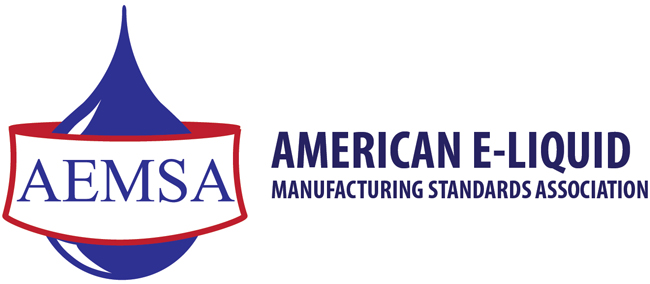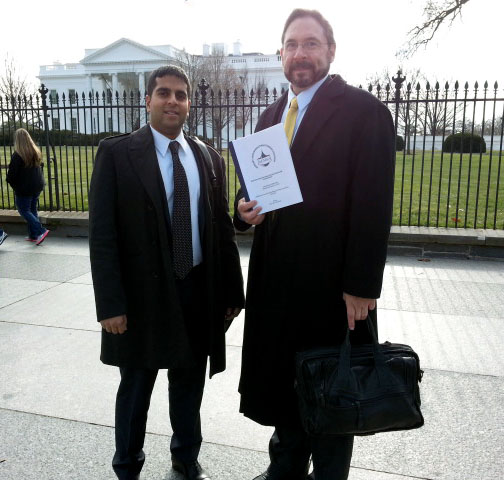On December 16, 2013 AEMSA President Lou Ritter, with Counsel Azim Chowdhury of Keller and Heckman LLP, met with OMB/OIRA representatives.
Quoted from: http://www.whitehouse.gov/omb
“Our regulatory system must protect public health, welfare, safety, and our environment while promoting economic growth, innovation, competitiveness, and job creation…. It must take into account benefits and costs, both quantitative and qualitative…. It must measure, and seek to improve, the actual results of regulatory requirements.
– EXECUTIVE ORDER 13563”
Quoted from: http://www.whitehouse.gov/omb/inforeg_administrator/
“The Office of Information and Regulatory Affairs (OIRA, pronounced “oh-eye-ruh”) is a Federal office established by Congress in the 1980 Paperwork Reduction Act. It is part of the Office of Management and Budget, which is an agency within the Executive Office of the President. It is staffed by both political appointees and career civil servants.
Under the Paperwork Reduction Act, OIRA reviews all collections of information by the Federal Government. OIRA also develops and oversees the implementation of government-wide policies in several areas, including information quality and statistical standards. In addition, OIRA reviews draft regulations under Executive Order 12866.”
———–
From: http://www.fda.gov/RegulatoryInformation/RulesRegulations/
(top of page paragraphs truncated)
“If proposed or final rules are deemed “significant” pursuant to Executive Order 12866, the Office of Management and Budget’s (OMB) Office of Information and Regulatory Affairs (OIRA) must review them and coordinate review with other Federal agencies that have an interest in the issues. In these cases, we work with OIRA to obtain appropriate clearances. More information about EO 12866 and OIRA’s role in the review of significant regulations can be found on the Office of Information and Regulatory Affairs Q&A’s page.”
————
Primary points of AEMSA’s presentation:
· The Tobacco Control Act broadly defines a “tobacco product” to include substances that are derived from tobacco (e.g., nicotine). However, products that only contain such tobacco derived substances should not be regulated in the same manner as products that contain tobacco per se (e.g., cigarettes, smokeless tobacco and roll-your-own tobacco). Tobacco-containing products, especially those that are combusted (cigarettes), are the most harmful and dangerous products on the “continuum of risk” and should be treated as such. On the other hand, electronic cigarettes and the e-liquid that is used in them do not contain any tobacco and are demonstrably less harmful than tobacco-containing products. In terms of the “public health” (net population) consideration, there is significant evidence that demonstrates that these products (and especially the refillable e-cigarettes) are overwhelmingly used by adults who have transitioned away from smoking cigarettes to “vaping”. There is little to no evidence that supports that these products are being used as a “gateway” to conventional, combustible cigarettes. Rather, they are being used as a “portal” away from smoking.
· The premarket authorization requirements set forth in Section 910 of the Tobacco Control Act should not apply to electronic cigarette and e-liquid products. Aside from “Big Tobacco” which has only recently entered this industry, most of the e-cigarette industry, especially within the refillable market, is made up of small businesses that will not be able to afford the costly premarket authorization requirements that currently apply to the regulated tobacco products. Any such premarket requirements will greatly impact thousands of small businesses and jobs across the country. Instead, the Deeming Regulation should focus on disclosure/notification requirements (i.e., requiring e-cigarette companies disclose their ingredients, manufacturing process, vapor/aerosol chemistry to FDA), and establishing Good Manufacturing Practices.
· The original “Grandfather Date” of February 15, 2007 in the Tobacco Control Act should not apply to electronic cigarettes and other tobacco-derived products, as those products were not contemplated when Congress was drafting the legislation. Nowhere in the legislative history of the Tobacco Control Act was there any discussion or even mention of electronic cigarette products. That original Grandfather Date was chosen simply because that was the date the bill that eventually became the Tobacco Control Act was first introduced in Congress. At that time, the U.S. electronic cigarette industry was nascent. Thus, only a few companies have access to potential “predicate” e-cigarette products that were being sold prior to February 15, 2007. Moreover, it would not make sense to apply the original Grandfather Date to such novel products that are only improving over time; the products on the market today are safer and cleaner compared to the rudimentary disposable models that may have been available on February 15, 2007.
All electronic cigarette and e-liquid products that are currently on the market should be allowed to remain on the market without obtaining FDA “premarket” approval. Part of OMB’s mission is to ensure that economic impacts are assessed as part of regulatory decision-making process. Any requirement that would result in products being forced off the market and would destroy the $2 billion e-cigarette industry, as well as the growing refillable market, which includes potentially thousands of small businesses and jobs across the country. The Deeming Regulation should allow for products already on the market to smoothly transition to fully regulated status, and create a reasonable premarket authorization process for new products that focuses on ingredient and manufacturing process disclosures to ensure purity and safety.
Secondary (supporting) points of the AEMSA presentation:
– Description of AEMSA: its origins as a non-profit 501(c)(6) Professional Trade Association, Consumer (unpaid) Volunteer Co-founded and led association, its structure, 5 Core Beliefs, functions (including Standards and verifications), focus on Consumer Protections and good manufacturing practices, membership growth, Subject Matter Experts (SMEs), Consumer Advocates (CAs), relationship with Enthalpy Analytical accredited laboratory, and advocacy (3 FDA “Listening Sessions” and other presentations).
– Economic Impacts 2012 vs. 2013 with collective numbers from 50% of membership responding to request for voluntarily supplied data.
-Shows Growth year over year in Gross Sales, Number of Employees, Number of Stores (both online and B&M), Number of Labs, Retail and Wholesale customers.
-Job Creation, USA new Manufacturing Industry, Export potential, etc.
-Commonly referenced industry market size estimates may be for ciga-likes only, refillable segments may already meet or exceed those estimates.
– Mainstream Media propaganda/rhetoric and dis/mis-information:
-“Little or no professional Scientific/Medical Research”
-Provided links to lists.
-Listed notable, credentialed and verifiable electronic cigarette research sources (names of peer-reviewed and published Study authors).
-“Gateway to Tobacco” – facts over myths.
-“Flavors Marketed to Youth” – facts over myths.
-“Oral Ingestion” Concerns – facts over myths.
– Industry Questions/Issues demanding answers and/or awareness:
-Twelve (12) bullet points ranging from THR impacts, myths vs. facts, consumer driven industry’s unprecedented growth, consumer volunteer implemented self-regulation, zero nicotine consumers, and more.
– Informed OMB/OIRA of (then) impending AEMSA sponsored Dr. Farsalinos PNLs Study presentation to FDA in 3rd Listening Session.
– AEMSA’s plans and agenda(s) for 2014.
– Allow Congress and/or Congressional Committees and/or Sub-Committees to effectively evaluate the TRUE Harm Reduction benefits and Economic Impacts and Implications.
Closing Statements
** Over-regulation of these products and industry will bring any and all product innovations, advancements and opportunities to further improve efficacy, further refining and improving Harm Reduction Benefits, and more all to a resounding and crashing halt. Additionally, over-regulation may well also put this electronic cigarette industry right back into the hands of Big Tobacco.
There are those with conflicting agendas and many are disseminating misinformation, disinformation and/or intentionally grossly incomplete information. Most (if not all) of these propagations are unverified, non-science based, often untrue and are extremely misleading. Any regulators relying on such disseminations (and/or attempting regulation without actively evaluating verifiable studies) are doing themselves, their constituents and humanity overall an outrageous disservice. Don’t we owe it to our society, and all of humanity, to facilitate Tobacco Harm Reduction?
Overregulation of Electronic Cigarettes can only guarantee tobacco HARM continues unabated.
AEMSA advocates electronic cigarettes and refillable e-liquid products for adult use only and supports banning sales to minors.
AEMSA advocates Reasonable, Realistic and Sustainable regulations that Promote Tobacco Harm Reduction.

